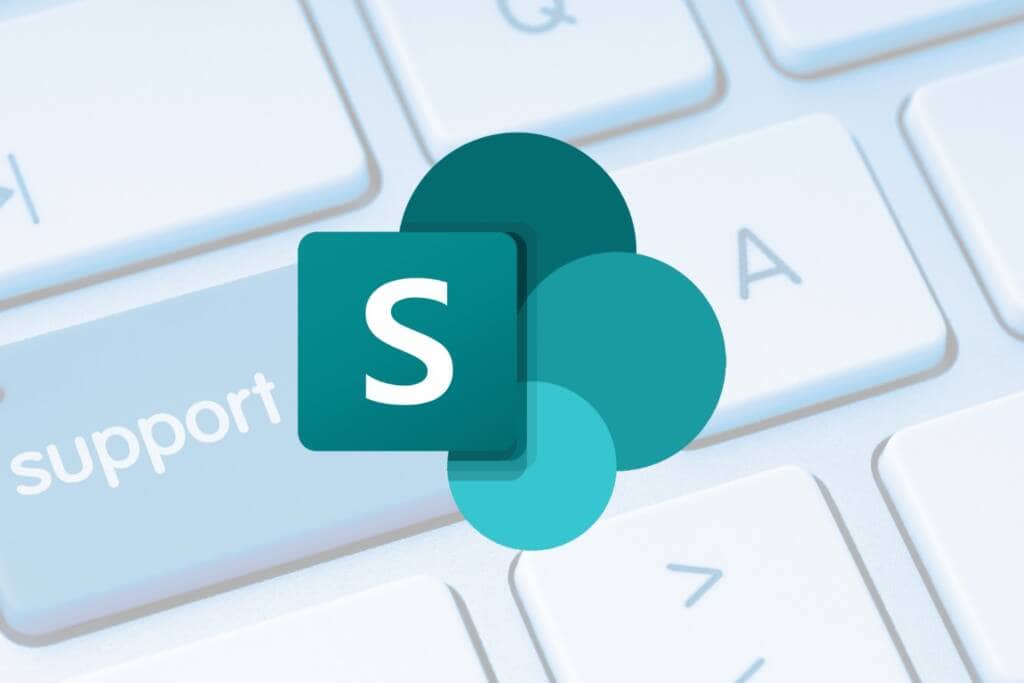I n an era where speed, transparency, and user satisfaction are crucial, organizations increasingly look to integrated solutions. For many, SharePoint (especially when tied into Microsoft 365 / Teams) is already foundational—so choosing an IT support ticketing system in SharePoint is about matching capabilities, efficiency, and user experience.
n an era where speed, transparency, and user satisfaction are crucial, organizations increasingly look to integrated solutions. For many, SharePoint (especially when tied into Microsoft 365 / Teams) is already foundational—so choosing an IT support ticketing system in SharePoint is about matching capabilities, efficiency, and user experience.
Below are the top things to look for in a ticketing system built on or integrating well with SharePoint, key considerations, and why NITRO Help Desk often emerges as the best choice.
Top Features to Look for in a SharePoint-Based IT Support Ticketing System
-
Native Integration with Microsoft 365 / SharePoint / Teams
You want a system that works with what you already have—not one that feels bolted on. Features like submitting tickets from within Teams, storing ticket data in SharePoint (or a connected list/library), and using SharePoint permissions reduce friction.
Example: NITRO Help Desk captures requests via SharePoint, Teams, email, the web etc. -
Automated Routing, Categorization, and Prioritization
Manually assigning every ticket or relying on users to pick perfect categories often leads to mis-routing and delays. Automation or AI that can interpret incoming issues, assign correct categories or teams, escalate based on priority or SLA thresholds is very helpful.
Real-world stat: Crow Canyon’s NITRO Help Desk introduced AI-powered ticket routing to cut the assignment time dramatically—many orgs aim for assigning tickets in under 5 minutes; NITRO’s routings are “virtually instantaneous.” -
Customizable Workflows & SLAs
Not all IT requests are equal. You’ll want the ability to define different service level agreements (SLAs) by priority, category, department, or user type. You’ll also want workflows: escalations, reminders, approvals, resolution processes, etc. -
Multi-Channel Support & Unified Ticket Logging
Users should be able to submit tickets via a portal, email, Teams, perhaps via a bot, or even through simple SharePoint forms. Whatever channel, everything should log into the same system so nothing is lost. -
Notifications & Alerts
Keep users and technicians informed. Alerts on ticket updates, escalation triggers, or when SLA thresholds are close help avoid service degradation. -
Reporting, Analytics, and KPIs
How many tickets are opened vs resolved? How long are they sitting in queue? What is the average time to resolution by category or team? Which technicians are overloaded? Efficient dashboards enable continuous improvement. -
User-Friendly Interface & Adoption Considerations
If submission, tracking, or status updates are difficult, users will avoid the system—or submit informally via email or chat, defeating the purpose. The UI should be intuitive, mobile-friendly, ideally embedded in tools users already use (e.g. Teams, Outlook). -
Security, Compliance, Permissions
Especially in regulated industries, you need data protection, appropriate user permissions (including limiting what users can see/edit), audit trails, possibly up to compliance standards. If working in SharePoint-on-prem or SharePoint Online, ensure the system aligns with your organizational and regulatory policies. -
Scalability and Support for Growth
As your organization grows, more tickets, more teams, more complexity. The system should scale without becoming unmanageable or brittle. -
Cost of Ownership & Maintenance
Licenses, hosting (if needed), support, training, upgrades—all factor in. Systems built on your existing platform (e.g. SharePoint/Microsoft 365) often reduce infrastructure costs but only if the tool is efficiently built.
Important Considerations & Pitfalls
-
Over-customization vs standardization trade-offs: Custom logic is powerful but can lead to maintenance burdens. Choosing a tool that allows easy modifications (no/low code) helps.
-
Permissions & visibility: SharePoint’s permission model can be tricky. For instance, users may see others’ tickets unless you carefully design views or item-level permissions. Also, giving “edit” permissions may allow unintended changes.
-
Adoption & Training: Even the best system is only as good as how well people use it. A steep learning curve or requirements for external tools may slow adoption.
-
Integration overhead: If you need to integrate with external systems (asset management, HR databases, etc.), ensure the system supports APIs or connectors.
-
Data migration & historical tickets: If moving from another system, ensure migration of old data or historical tickets is feasible.
-
Support & vendor stability: You want vendors with good track records, responsive support, frequent updates, especially for issues like security patches, compatibility with newer SharePoint / Teams versions.
Statistics & Market Trends
-
The global helpdesk automation market is projected to reach USD 8.14 billion in 2025, growing substantially by 2029.
-
Since 2020, help desk software adoption has increased by 103%—reflecting strong digital transformation.
-
86% of service professionals report improved productivity after implementing helpdesk software.
-
Organizations that integrate AI and automation see large gains. In NITRO Help Desk’s case, automated routing / categorization reduces assignment delays dramatically.
Why NITRO Help Desk Is an Ideal Choice
Combining the above desired features and addressing many of the pitfalls, NITRO Help Desk (by Crow Canyon Software) often ticks the boxes for organizations seeking a mature, integrated SharePoint-based ticketing system. Here’s how:
| Capability | How NITRO Delivers |
|---|---|
| Microsoft 365 / SharePoint / Teams Integration | Built natively on SharePoint & Microsoft 365; supports ticket submission via email, Teams, web forms, SharePoint, with visibility inside Teams. |
| AI-Powered Routing & Automation | Uses AI to automatically analyze ticket descriptions and assign correct issue type / category, reducing manual effort. AI-powered ticket routing was introduced to make assignment almost instantaneous. |
| Advanced Workflows & SLAs | You can configure SLAs by category, priority, department; build workflows, escalations, notifications. |
| Embedded Reporting & Analytics | Reports, dashboards, KPI tracking, satisfaction surveys are part of the product. Detailed time tracking of how long tickets spend in each status. |
| User-Friendly Experience & Adoption | Integration with Teams (including a Teams App), mobile access, self-service portals. Users can submit and track tickets from within tools they already use. |
| Security, Permissions & Compliance | Because it leverages SharePoint / Microsoft 365, permissions and data are governed by those platforms. Also, the vendor emphasizes built-in features like email sync (so communication becomes part of the ticket record) and audit trail capabilities. |
As a real-world example, in a case study with a large non-profit, implementing NITRO Service Desk powered by SharePoint & Microsoft 365 led to:
-
Much faster ticket resolution via AI-assisted routing & categorization.
-
Streamlined internal operations by automating form workflows, notifications, and reporting.
-
Improved staff and user experience: since many interactions could happen in Teams (a familiar environment) and through portals they already used.
Example Scenarios / Use Cases
-
Mid-sized organization (200-500 users) wants to stop using email and spreadsheets for IT support. They already use MS Teams and SharePoint. By implementing NITRO Help Desk, they enable a “submit from Teams or portal, track status, get notified automatically, resolve faster” flow. The transparency helps reduce duplicate tickets, unanswered messages, and frustration.
-
Non-profit / education: Often constrained budgets, lots of volunteers or part-time staff. They need something that doesn’t require massive licensing, can scale, is secure, and integrates with existing tools. NITRO’s no/low code workflows and usage of Microsoft infrastructure help reduce incremental cost.
-
Enterprise with regulation / compliance needs: They need audit trails, strict permissioning, SLA thresholds, sometimes on-prem or hybrid SharePoint. NITRO supports both SharePoint Online and on-premises in some editions.
Recommendations & Checklist Before You Choose
Here’s a quick checklist to run through with your team:
-
What are your volume and types of tickets? (Incident, service request, change, etc.)
-
What SLAs / priority definitions do you need?
-
Which channels will users use to submit tickets? (email, Teams, portal, bots, etc.)
-
What permissions & visibility rules are needed for different users?
-
What integrations are needed (asset management, HR, finance, etc.)?
-
What reporting / metrics do you require, now and in the future?
-
What is your total cost of ownership? Training, licenses, support, maintenance.
-
How important is AI / automation versus manual control?
-
What is the vendor’s roadmap? Updates, security, compatibility with Microsoft 365 / SharePoint’s versions.
Conclusion
If you’re searching for an IT support ticketing system SharePoint solution:
-
You need something that leverages your existing Microsoft investment.
-
Automation, AI routing, SLAs, multi-channel submission, and good reporting are not “nice to have”—they distinguish good from great.
-
Avoid systems that require too much external infrastructure, custom coding, or juggling many tools.
NITRO Help Desk stands out because it addresses almost all these needs, with strong Microsoft 365 / SharePoint / Teams integration, AI-assisted workflow and routing, powerful but usable interface, and proven case studies. For organizations that want to scale, increase efficiency, and improve user satisfaction while staying within their Microsoft ecosystem, it’s a compelling choice.

